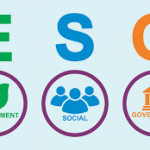Every time we experience volatility in the markets, some of your 401(k) plan participants decide to sell out of equities (locking in losses) because they get scared. Others know they need to increase their contribution rate to capture your maximum company match, but they never act. Why do participants do these things? Justin Goldstein recently wrote about the behavioral finance concepts which underpin these actions. I have taken these concepts and added my thoughts on how you can help your 401(k) participants overcome these destructive behaviors.
Anchoring
We like to anchor the logic we use in making a decision to some facts we believe to be true. If we wonder about whether we are making the right decision, we often seek reassurance that our facts and logic are valid, rather than seeking and accepting facts that might challenge our ideas and conclusions. The result is that sometimes we are too stubborn to admit that we have used the wrong facts to generate a conclusion.
In my discussions with plan participants, I have seen anchoring show up in many forms. Participants have said to me since I started in this business, more than 30 years ago, thatSocial Security won’t be around when it is time for them to collect, they won’t live long enough to retire, they plan on working in retirement and don’t have to save now, etc.
Solution: The best way to combat anchoring problems is with a good employee education program. Make your annual employee education sessions mandatory. Consider offeringonline education that requires employees to complete modules by a specific date.
Gambler’s fallacy
Some of your plan participants enjoy trading their 401(k) accounts. They believe they can market-time their buys and sells to take advantage of market fluctuations. Unfortunately these participants normally trade their 401(k) accounts down to nothing.
Solution: Require these individuals to meet with the investment advisor that works with your plan. You can identify who they are by looking at the website reports that your recordkeeper produces. They will be the individuals who are not close to retirement who check their balances every day and make frequent trades.
Herd behavior
We tend to take comfort in doing what everyone else is doing, especially duringemotionally charged times. We rationalize that everyone else can’t be wrong and if things turn out badly, oh well, we will have plenty company to be miserable with. As a result, we sell out of equities when markets fall and over-allocate our account balances to equities when the stock market soars.
Solution: Plan participants should stick to their savings and investment plans and manage their emotions effectively regardless of whether the markets rise or fall. Make sure that your investment advisor’s contact information is widely distributed and available to participants and encourage them to call your advisor before making any significant changes to their savings and investment plans.
Inertia
Your plan participants are busy with their lives. Therefore it is easier for them to do nothing rather than something. Inertia impacts plan participants when they don’t increase their contribution percentages to capture your full match or when they fail to enroll in your plan.
Solution: Add automatic enrollment and auto contribution escalation features to your 401(k) plan. The data is there showing that auto features work.
Loss aversion
Studies have shown that the pain of loss is twice the pleasure of gain. We expect the value of our 401(k) accounts to always increase and are surprised when we lose money instead. Loss aversion is the main reason why most participants end up being bad investors. When the markets fall they get scared and sell.
Solution: Similar to what was shared above, it is important for participants to stick to their savings and investment plans. Make sure your employee education sessions feature discussion of these topics and also encourage participants to call the investment advisor that works with your plan before selling during market downturns.
Mental accounting
Many of us divide up our financial worlds and create constructs that make sense to us but are really not all that logical. We may attach different meanings and rules to retirement savings, personal savings, vacation savings, etc. For example, we may decide not to contribute the amount required to receive the maximum company match because we are saving to buy a new car. Giving up free money from an employer is something I see employees doing all the time. They don’t accept that the very best, safest, and highest returning investment they can make is accepting 100% of that free company match.
Solution: Many employers have decided to offer financial wellness education and have been merging it with their 401(k) employee education. Consider offering both at your firm. Also, consider running a report from your recordkeeper’s website that shows which participants in your plan are not receiving the maximum company match. Send out an email to these individuals making them aware of their shortfall and give the report to your investment advisor and ask him to talk to these people.
Myopia
Focusing too much on the present rather than the future is something we all are guilty of. It is hard for some participants to get excited about retirement when it is 30 or 40 years away. As a result, they don’t save enough in their 401(k) plans.
Solution: Nearly every recordkeeper produces quarterly statements that highlight participants “gaps” — the difference between what they will need to retire and what they are on track to save. Be sure that you are electing to have this gap analysis displayed on your quarterly statements. If you aren’t working with a recordkeeper that provides this analysis, think about making a change to one that does.
The next time you are putting together ideas for a 401(k) employee education session, make sure you talk about these behavioral finance concepts.







